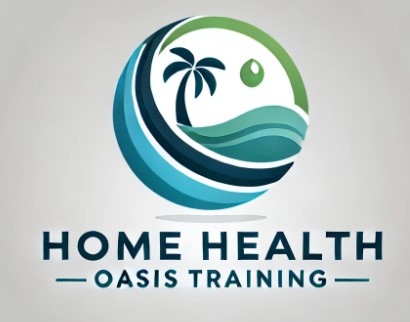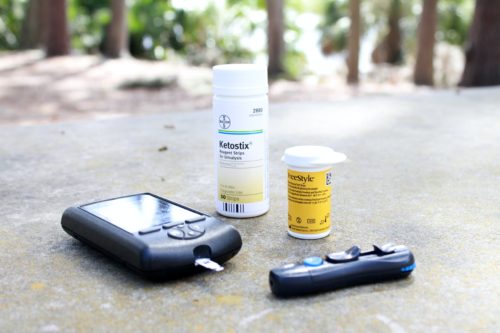Understanding the Basics of Home Health Coding: A Beginner’s Guide
In the realm of healthcare, accurate documentation and coding are essential components of ensuring efficient and effective patient care. Among various branches of healthcare, home health coding holds a special significance because it plays a critical role in documenting the care provided to patients in their homes. It may seem complex at first, but understanding the basics of home health coding can help you navigate the terminology, coding systems, and how codes are used in patient care documentation. Whether you are a new coder or a healthcare professional looking to understand the importance of coding in home healthcare, this guide will provide valuable insights.
What Is Home Health Coding?
Home health coding refers to the process of assigning specific codes to various elements of patient care provided in a home health setting. These codes are used to represent diagnoses, procedures, treatments, and services that are delivered to patients in their homes. Home health agencies (HHAs) rely on these codes to ensure proper reimbursement from Medicare, Medicaid, private insurance companies, and other payers.
The goal of home health coding is to provide accurate and complete documentation of the patient’s medical history and treatment plan. This not only ensures proper billing but also supports clinical decision-making, quality measurement, and overall patient outcomes.
Importance of Home Health Coding
Coding is essential for a number of reasons:
-
Proper Reimbursement: One of the primary reasons for coding is to ensure that home health agencies are reimbursed accurately and timely for the services provided. Inaccurate coding can lead to delayed payments or denials, which can disrupt agency operations.
-
Compliance with Regulations: Healthcare is highly regulated, and home health coding helps agencies comply with federal and state regulations. For example, Medicare has specific guidelines for billing home health services, and coding plays a key role in adhering to these standards.
-
Data Reporting: Proper coding supports data collection and reporting for quality measurement. Agencies are required to report certain clinical outcomes and patient data, and accurate coding is critical to ensure the data is complete and reliable.
-
Care Continuity: Coding helps create a clear record of the services rendered to patients. This record can be used by other healthcare providers involved in the patient’s care, ensuring that everyone has access to the same, accurate information.
-
Clinical Decision-Making: Coding assists healthcare providers in tracking trends in patient care and diagnoses, which can lead to better clinical decision-making.
Key Terminology in Home Health Coding
Before delving into the specific coding systems used in home health care, let’s take a moment to review some common terminology related to coding.
-
Diagnosis Codes: These codes represent the medical conditions or diseases that a patient is suffering from. They help healthcare professionals understand the patient’s health status and inform the care plan. Diagnosis codes are primarily derived from the ICD (International Classification of Diseases) coding system.
-
Procedure Codes: Procedure codes are used to describe the specific services or treatments a patient receives. These could be for things like therapy sessions, home visits, or medical procedures. In home health care, these codes are often derived from the CPT (Current Procedural Terminology) or HCPCS (Healthcare Common Procedure Coding System) systems.
-
HCPCS Codes: The HCPCS system is used to describe healthcare services, products, and supplies not covered by the ICD system. For example, it includes codes for durable medical equipment (DME), such as wheelchairs, oxygen equipment, and other items commonly used in home health care.
-
ICD Codes: The International Classification of Diseases (ICD) codes are used to classify diseases, conditions, and other health-related issues. These codes are widely used across all healthcare settings and are essential for documenting the patient’s condition. ICD-10 is the most recent version of this system, which replaced ICD-9 in 2015.
-
OASIS (Outcome and Assessment Information Set): OASIS is a comprehensive assessment tool used in home health care to collect data about a patient’s health status, functional abilities, and care needs. OASIS is critical for ensuring that home health agencies meet the requirements for reimbursement and care planning.
-
Modifying Codes: In some cases, modifiers are added to procedure or diagnosis codes to provide additional information or clarify the specifics of a service. For example, modifiers can indicate whether a procedure was performed bilaterally or if it was urgent.
Understanding the Major Coding Systems in Home Health
The primary coding systems used in home health care are the ICD-10, CPT, HCPCS, and OASIS systems. Each of these coding systems serves a unique purpose, but they all contribute to the overall picture of the patient’s care.
1. ICD-10 Codes
ICD-10 codes are used to report the diagnoses and health conditions of patients. This coding system is crucial for home health agencies, as it serves as the foundation for most patient documentation and billing. ICD-10 codes are alphanumeric, and they are structured to reflect the specific nature of the patient’s condition, allowing for greater precision.
For example, if a patient is being treated for diabetes, an ICD-10 code would be assigned that identifies the specific type of diabetes (e.g., type 1 or type 2) and any complications that may exist (e.g., diabetic neuropathy).
ICD-10 codes are important for the following reasons:
- They provide a standardized way of describing diseases and conditions.
- They are used for reimbursement and billing.
- They are used to measure patient outcomes and support quality reporting initiatives.
- They assist with research and epidemiological studies by categorizing disease trends.
2. CPT Codes
Current Procedural Terminology (CPT) codes are used to describe the medical procedures, treatments, and services provided to patients. These codes are most often used in outpatient settings, but they also play an important role in home health care when services such as therapy or diagnostic tests are performed.
For example, if a physical therapist visits a patient’s home to conduct a therapy session, a specific CPT code for physical therapy would be assigned to describe the service. In the case of a home health nurse administering an injection, the appropriate CPT code would be used to describe the procedure.
CPT codes are important for:
- Facilitating accurate billing for medical services.
- Identifying the types of services rendered, which aids in patient care management.
- Ensuring that the services provided align with the patient’s care plan.
3. HCPCS Codes
The Healthcare Common Procedure Coding System (HCPCS) is a set of codes used to describe medical procedures, equipment, and services that are not covered by the CPT codes. In the home health setting, HCPCS codes are particularly important for billing for durable medical equipment (DME) and supplies such as oxygen equipment, walkers, and other home-based medical tools.
For example, a patient who requires an oxygen concentrator will have a HCPCS code assigned to describe that piece of equipment.
HCPCS codes are important for:
- Reimbursement for medical products and services.
- Tracking usage of medical supplies and equipment.
- Billing for services that are not captured by CPT codes.
4. OASIS Data Collection
The Outcome and Assessment Information Set (OASIS) is a unique assessment tool used in home health to gather a wide range of patient information. This system is required for all Medicare and Medicaid patients who receive home health services. The OASIS assessment covers various aspects of patient health, including:
- Medical conditions (diagnoses)
- Functional status (e.g., mobility and self-care abilities)
- Cognitive status
- Nutritional status
- Medications
- Vitals and general health indicators
This data is used not only for reimbursement purposes but also to track patient outcomes, plan care, and ensure compliance with quality measures.
The OASIS assessment helps home health agencies:
- Determine the patient’s eligibility for care.
- Develop a comprehensive care plan.
- Monitor patient progress over time.
- Ensure that care is aligned with Medicare’s requirements.
How Codes Are Used in Patient Care Documentation
Coding plays a key role in documenting patient care, and understanding how codes are integrated into this process is crucial for all professionals involved in home health care. Here’s an overview of how coding is used in patient care documentation:
1. Initial Assessment and Diagnosis
When a patient is referred to a home health agency, an initial assessment is conducted by a nurse, therapist, or physician. During this assessment, the patient’s health status is evaluated, and diagnosis codes (ICD-10) are assigned to reflect the patient’s conditions. The OASIS assessment tool is also used to gather key health information and determine the patient’s care needs.
2. Developing the Care Plan
Based on the assessment, a personalized care plan is developed to address the patient’s specific needs. The care plan outlines the services that will be provided, such as physical therapy, nursing visits, or medication management. CPT and HCPCS codes are assigned to represent the planned services and procedures.
3. Documenting Services Rendered
As home health professionals visit the patient’s home, each service rendered is documented with the appropriate CPT or HCPCS code. These codes describe the procedures, treatments, and therapies that were provided. Accurate coding ensures that services are tracked and can be billed properly.
4. Ongoing Monitoring and Reassessments
Throughout the course of care, ongoing assessments are performed to track the patient’s progress. The OASIS tool is often used to reassess the patient’s health and functional status. Reassessment helps to adjust the care plan if needed and ensures that the patient’s evolving needs are met.
5. Final Outcome and Discharge
When the patient reaches a point where they no longer require home health services, a final assessment is conducted. This may involve documenting the patient’s outcomes using OASIS data, as well as assigning final codes to reflect any changes in the patient’s health status.
Conclusion
Home health coding is an essential aspect of patient care in the home health industry. Understanding the different coding systems—ICD-10, CPT, HCPCS, and OASIS—can help newcomers navigate the complexities of home health care documentation. These codes not only support accurate billing and reimbursement but also improve patient outcomes by ensuring that services are delivered efficiently and in accordance with established care plans. Whether you are just starting out in home health coding or looking to improve your knowledge, a clear understanding of these fundamental coding systems will pave the way for success.
Editor's Pick
Leave A Comment
Related Posts
- Published On: June 2, 2024
Transition from OASIS-E to OASIS-E1: Key Changes and Implications for […]
- Published On: May 28, 2024
Importance of Clinical Narrative and Nurse Teachings while Documenting Home Health OASIS Assessments
Importance of Clinical Narrative and Nurse Teachings while Documenting Home […]
- Published On: April 29, 2025
Navigating the Complexities of Medicare and Medicaid Reimbursement for Home […]
- Published On: April 27, 2025
Engaging Your Team Around the IPR: Turning Data into Motivation […]
- Published On: April 27, 2025
Engaging Your Team Around the IPR: Turning Data into Motivation […]

